Eureka, California is the city where I'm from
but if you ask me what I'm reppin' then I'll tell you The Hum.
-- Never Die, Humboldt County hip-hop duo
The poster announces a "Red Carpet World Premiere." Love, Humboldt short films, it says, Saturday night at the Arcata Theatre Lounge. A comely redhead in lace offers up a wicker basket brimming with local delicacies: a round of Cypress Grove Chevre, Lost Coast Brewery's Raspberry Brown ale, Winnett Vineyards' Willow Creek Red (glass included), a brick of creamy Havarti from Loleta Cheese. Stargazer lilies peek out from behind waxy apples and an intensely red tomato. In the back of the basket, a crusty baguette. The whole cornucopia rests on a ruffly clown collar of fresh lettuce.
It makes you wonder: What the hell is this? Art or advertisement? Movie premiere or lunch buffet? First and foremost, it's advertising, though make no mistake: there are grand artistic ambitions here too. The 16 short films premiering this weekend at the Arcata Theatre Lounge -- documentary-style shorts that mix natural beauty with product placement -- mark the launch of an experimental (and expensive) campaign promoting some of the area's finest products under an umbrella brand, a brand called "Humboldt."
Funded jointly by the U.S. Economic Development Administration, the county's Headwaters Fund, the North Coast Small Business Development Center and the participating businesses themselves -- to the tune of almost $170,000 -- the Humboldt branding project has its sights set on the sea of consumers beyond the Redwood Curtain. The idea, as we understand it, is to publicize not just specific local products but an overarching image, a romanticized Humboldt mystique characterized by pristine landscapes, eco-conscious citizens and quality, hand-crafted wares. Couple these idyllic visions to our county name in the minds of consumers and voilá -- the rising tide will lift all Humboldt-made boats.
This is textbook marketing strategy -- even Exxon Mobil puts pretty nature imagery in its commercials -- but ad campaigns this ambitious have historically been the purview of major corporations with multi-million-dollar budgets for glossy print ads and flashy TV commercials. The Humboldt branding effort, on the other hand, was organized through the county's Office of Economic Development with an initial budget of less than $100,000 (most of it public money) and a success strategy dependent on the Internet's social media frontier.
That budget may be small potatoes in the ad world, but it's a fortune for small-town economic development. When the Journal first wrote about the project last summer ("Rebranding Humboldt," June 25, 2009), many got the impression (perhaps justified by the scant facts released at the time) that the county had just dropped 100 grand for some YouTube videos. Forty-four thousand of that cost came from the Headwaters Fund, the county's always-controversial public coffer for economic development. Local video producers wondered why they didn't get the gig, especially once they heard that the county had hired a cinematographer from L.A. The economic development office was inundated with angry phone calls. County supervisors fielded calls demanding an explanation. A few people even filed Public Records Act requests for documentation on the project's procurement process.
The scope of the endeavor, it turns out, goes well beyond YouTube. Last week, in anticipation of the "red carpet premiere," the Journal met with county Economic Development Coordinator Jacqueline Debets, Economic Development Specialist Angie Schwab and local PR agent Ann Johnson Stromberg for a sneak peek at the marketing campaign and an explanation of what it's really all about. Yes, there are videos that will show on YouTube and, with any luck, be linked to Facebook and Twitter. There's also a set of logos (they read "Made in Humboldt California"), a massive supply of stock photos and surplus video footage, a Web site and an array of marketing materials designed by the HSU Communications Department, all of which will be made available, for free, to local businesses, the Chamber of Commerce and the Convention and Visitors Bureau.
Will this become the county's new model for economic growth? Or will these snazzy cyber tools get buried in the digital babel of movie downloads, porn and barfing baby videos?
"All advertising is a leap of faith," Debets said. Particularly when you're trying to harness new trends like Twitter and Facebook. "But that's where people who are 25 are living today, and we've got to recognize that marketing is changing very quickly."
One other person was at the meeting last week -- Clint Victorine, owner of Eel River Organic Beef. He's a big believer in the Humboldt branding project. "The county in general has just been phenomenal to me," he said. Recently his company landed a deal with Whole Foods Markets' Southern Pacific region, encompassing health food stores in southern California, Nevada, Arizona and Hawaii. Ten of the region's largest stores started carrying Eel River grass-fed beef this month; within two years all 50 stores in the region will carry it. And at each of the meat counters, a flat-screen monitor will run a video in a loop, showcasing the lush pastures and (happy?) healthy, free-range cattle that go into the product.
Knowing where your food comes from is "the biggest thing goin' in 2010," Victorine said. "Everyone wants to meet me and see me." The one-minute video will allow consumers from Las Vegas to Honolulu to do just that.
Victorine gives credit for this Whole Foods coup to a 2007 study, financed by the Headwaters Fund and a community development block grant, that looked at ways to promote the local grass-fed beef industry. With the locavore and organic food movements building steam, economic development officials saw in Eel River Organic Beef and Humboldt Grassfed Beef ideal candidates for market expansion. "It's a product that can meet everybody's criteria with one label -- healthy, humane, free-range, grass-fed, local, organic," Victorine said of his product. (Consumers as far away as San Diego consider his beef local since it comes from California, he explained.)
Now that his cattle have a hoof in the door, Victorine is hoping to keep it open for other Humboldt products. He was among a handful of local business owners who, with the guidance of the economic development office, came up with the branding project idea in the first place. The county had recently identified several "targets of opportunity" -- industry clusters that showed potential for growth, one of which was specialty agriculture, including beef, dairy, seafood and flowers. Throw in beer and wine and you can see how this came to be called "the pursuit of happiness" cluster.
In meetings with Debets and Schwab, owners of these businesses said they were already getting mileage out of the Humboldt name. Distributors and consumers who had been here were covetous, Debets said, of our "clean air and water, cool lifestyle, biking, kayaking and surfing after work, [living] closer to the land... ." The business owners said, "'If you could brand that, roll it up and solidify it, that would be useful for us selling more products,'" Debets recalled.
What these entrepreneurs had learned over the years was that the county will essentially sell itself if people can experience it. Our remote location, however, makes that a big "if." Victorine, for example, worked long and hard to get representatives from Whole Foods up here. Once here, though, they were amazed by the evergreen cow pastures, quality food products and majestic scenery, he said.
"Small businesses here have the advantage of the relaxed lifestyle and local beauty but the disadvantage of being far from large markets," agreed Mary Keehn, owner of Cypress Grove Chevre. Her company's flagship product, Humboldt Fog goat cheese, has already spread our county name to distant culinary corners. (Reportedly, legendary British comedian/amateur oenophile John Cleese declared during a local performance, "I've never been to a county named after a cheese before.")
After Victorine gave the Whole Foods bigwigs a tour of the North Coast, he wined and dined them at the Ingomar Club with all-local products. They were impressed, especially by Coast Seafood's Humboldt Bay oysters and Humboldt Creamery ice cream, which Victorine said the company may someday carry. Trader Joe's has also expressed interest, Debets Victorine added.
The Humboldt branding project is based on the hypothesis that, through the boundary-crumbling powers of the Internet, outsiders can take a tour of Humboldt County virtually anywhere, anytime. Participating businesses can embed videos on their Web sites, send DVDs to corporate purchasing managers and band together through the color-coordinated marketing guidelines of the Humboldt brand, which include "dos and don'ts" for logo reproduction (no stretching or rotating it) as well as suggested themes and keywords with which pepper ad copy ("genuine," "abundance," "eco-friendly" and "pristine," to name just a few).
Let's go ahead and acknowledge the glassy-eyed elephant in the room: John Cleese's epicurean social circles notwithstanding, Humboldt County already has a far-reaching reputation, and it's for one thing and one thing only: "[T]he best marijuana in the world," said local rapper José Recendiz, aka KYZ-J. His groups Never Die and Lower Class Alcoholics frequently encounter this reputation on the road. "Everywhere we go, that's what we get," he said. "Either you haven't heard of [Humboldt], or that's what you've heard of."
It's a double-edged sword. He and his crews don't shy away from the topic (a Never Die track called "Sweet Sticky," for example, proclaims, "I'm a stoner, kinda like my mother and my brother/I got a mic in one hand and a joint in the other"). But Recendiz said he gets tired of being pigeonholed. "As a musician you hope to get any kind of recognition you possibly can, but a true artist wants to be recognized for his art."
He designed a T-shirt logo that he hopes can augment Humboldt's prestige. The image, based on hip-hop legends Run DMC's trademark logo, reads "REP HUM" in white block letters sandwiched between horizontal red stripes. He has other ideas, too. "The second round of shirts we're doing will be fishing boats and logging trucks with 'REP HUM' in the clouds," Recendiz said, "just going to opposite side, like maybe some kids locked up in a tree trying to save it. These are all things people not from here never see or hear about."
True enough. But is our reputation for quality cannabis necessarily bad? Most experts acknowledge that the economic heft of marijuana and its ancillary industries has become the major driver of the local economy, with annual county-wide revenues from weed alone estimated as high as half a billion dollars ("When Weed is Legal," April 7, 2009). While the county's Economic Development Division labors to manufacture brand recognition, they're studiously ignoring the existing reputation that has developed organically, so to speak. Marijuana and Humboldt are synonymous in most circles, which helps the name practically sell itself.
In 2002, 24-year-old Angel Young had "Humboldt" embroidered in plain black letters on the front of a few sweatshirts, which she then peddled from a rented kiosk at the Bayshore Mall. They went like discount dime-bags. She soon commissioned new designs, added hats and T-shirts to her clothing line and moved into a real storefront. Now located in a prime 3,000 square-foot mall location, with plans to open an Arcata branch, the Humboldt Clothing Company carries a large line of merchandise with dozens of local-themed designs.
"We're definitely the most desired brand around here," Young recently told the Journal. "We dress probably half this county." While she and husband Rob Ensign don't limit their designs to weed references, they don't shy away from them either. The attire they sell ranges from sequined pot leaf ball caps to T-shirts with giant sequoias and reggae lion hoodies. Clothes featuring the company logo -- the word "Humboldt" with a redwood as the "L" -- are hot sellers.
Debets said that, contrary to initial reports, it's not the goal of the Humboldt branding project to change or usurp the county's existing notoriety. The marijuana culture isn't going anywhere anytime soon, she acknowledged. "But this stuff is there too, right?" she said, referring to the legal side of specialty agriculture. Cannabis may be legalized sooner rather than later, and the county as a whole should be ready for that, Debets said. "In the meantime, there are legitimate businesses making up an altogether bigger part of the economy. We've got tons of work to do."
The Humboldt branding project has yielded 16 short films, shot in the spring and fall of last year. Ten were commissioned by individual businesses or co-ops including the Humboldt Wine Association, Sun Valley Floral Farms and Eel River Organic Beef. (This is what's showing at Whole Foods' meat counters.) These videos, called "Humboldt Made," are each about a minute long and serve as cinematic business profiles featuring interviews with the owners and some truly gorgeous cinematography -- ripe grape clusters hanging heavy on the vine, cattle at Table Bluff overlooking the Pacific and (relevant or not) waves crashing against rocks at Moonstone Beach.
The other six videos have an artsier, more high-concept conceit. Roughly five minutes apiece, they track a single, simple story arc (essentially girl meets boy, girl and boy fall in love and get married). Shot with a local cast at picturesque locales from Benbow to Ferndale to Trinidad, this series pulls out all the film-school stops, from slow-motion to time lapse. Cumulatively titled "Love, Humboldt" -- with individual titles like "The Kiss," "The Picnic" and "The Wedding" -- this serialized tale has no dialog, just pretty imagery and a mellow folk soundtrack. In each vignette, whether it's artists with easels on Moonstone Beach, young women enjoying a carriage ride through Old Town Eureka or a night-club dance sequence at Lost Coast Brewery, local food and beverage products make conspicuous cameos.
This portion of the project cost about $23,000, including a $10,000 Headwaters grant, according to Humboldt County Film and Digital Media Commissioner Mary Cruse. The footage has a handsome polish, lending even familiar landscapes an exotic beauty. "I wanted it to be cinematic, not an advertisement," Cruse told the Journal on Friday. That's a curious ambition given the project's stated purpose. But Cruse believes the high production value will benefit not only the featured producers but local filmmakers too.
That may sound like cold comfort to the videographers who weren't hired for the project. Chuck Edwards, owner of Stroop Effects Studios, feels the county didn't adequately reach out to local talent during the bidding and procurement process. "It wasn't done the way things are done in the real world," Edwards said. Not all local producers were called (he doesn't remember getting a call himself). Those who were called were asked for their hourly rate, he said. "Nobody really had a full understanding of what the project was," Edwards said. "I was disappointed in the process. It seemed clandestine."
Rick St. Charles, who co-owns Circle Sound Productions with his wife, Lisa Monet, said he and his son Matt were contacted and attended some preliminary meetings. "Matt and I said we would be delighted to participate and [were] willing to forgo our usual upfront deposit," provided the county would sign a contract guaranteeing payment, which is standard procedure, St. Charles said. "Mary [Cruse] said she couldn't do that because the grant money hadn't actually come through yet. We asked why she couldn't wait until it did to ask people to start work [and] she said she wanted to start immediately to take advantage of the weather."
Angie Schwab, the county economic development specialist who managed the project, defended the procurement process, saying she called "almost every [local] videographer in the phone book and ... listed in Google search." Each was informed about the scope of the project, she insisted, before being asked for their hourly rate. The Humboldt Film Commission won the bid, she said, because "They offered the most for the lowest cost."
St. Charles said he doesn't hold a grudge, and Edwards admits it's possible that he received a call and simply forgot. As for the complaint that some members of the crew weren't local, Debets reasoned that those who weren't actually living here at the time were at least HSU alumni and therefore "Humboldt made" themselves. The bottom line, she said, was that they were the most qualified.
In a nod to the Web's democratic nature, Saturday's premiere will include screenings of five entries in the "I Love Humboldt" video contest, for which members of the public were invited to submit their own 30-second YouTube clips extolling our local virtues. (Log onto KHUM.com Feb. 10 or 11 to vote for your favorite. The winner gets $300 and a Flip video camera.) The "Made in Humboldt" shorts and all six chapters of "Love, Humboldt" also will be shown at the event, with appetizers and libations provided free of charge. Admission is free, too (doors at 6; show at 7 p.m.).
After the premiere, videos will be released weekly at a new Web site, www.HumboldtMade.com, into July. Debets said videos for other businesses may be produced in the future, as long as grant money can be secured. Owners of businesses in other clusters, like niche manufacturing and forest products, have expressed interest in this approach. "That's phase two," Debets said.
Of course, the Internet is not just democratic; it's also capricious. Viral videos are difficult to manufacture. Is it crazy to spend tens of thousands of dollars on YouTube videos? Maybe. Then again, you could be reading this story on your cell phone or iPad. Maybe it would be crazier not to.
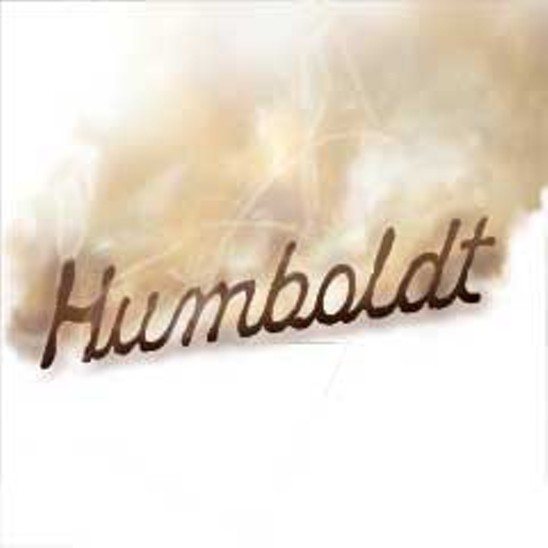

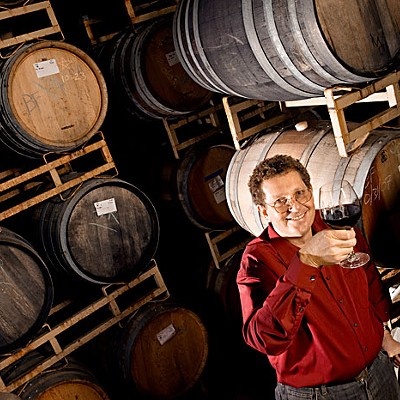

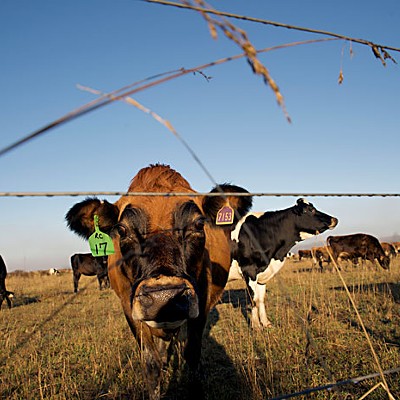
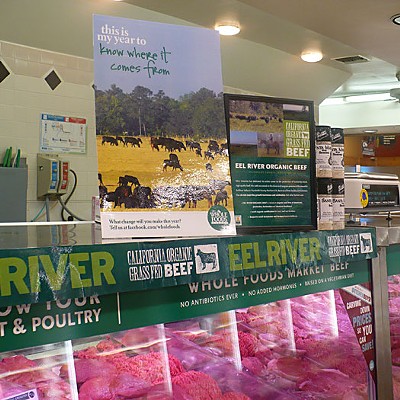
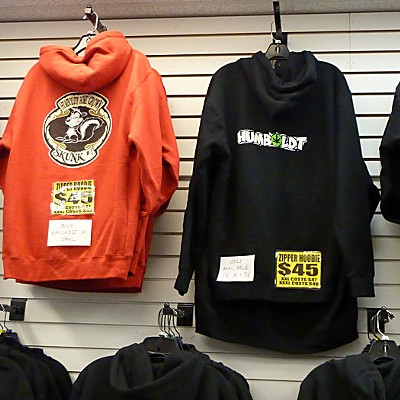
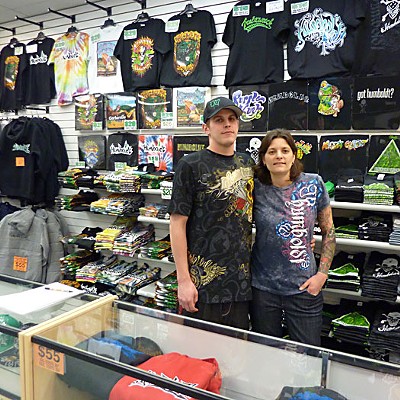

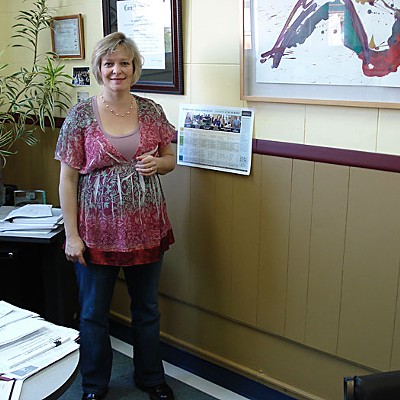

Comments (20)
Showing 1-20 of 20